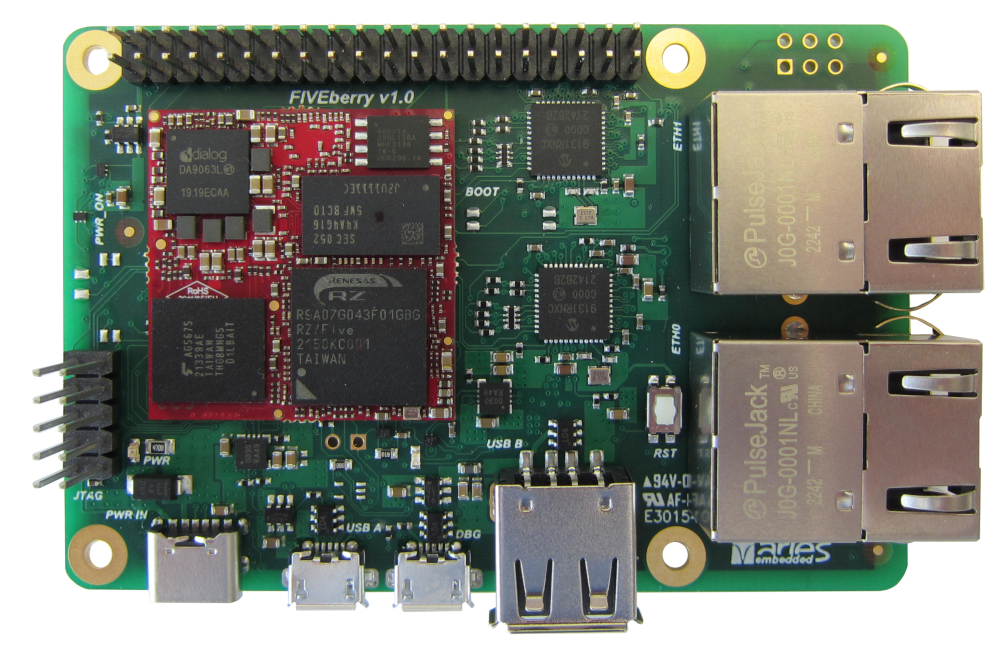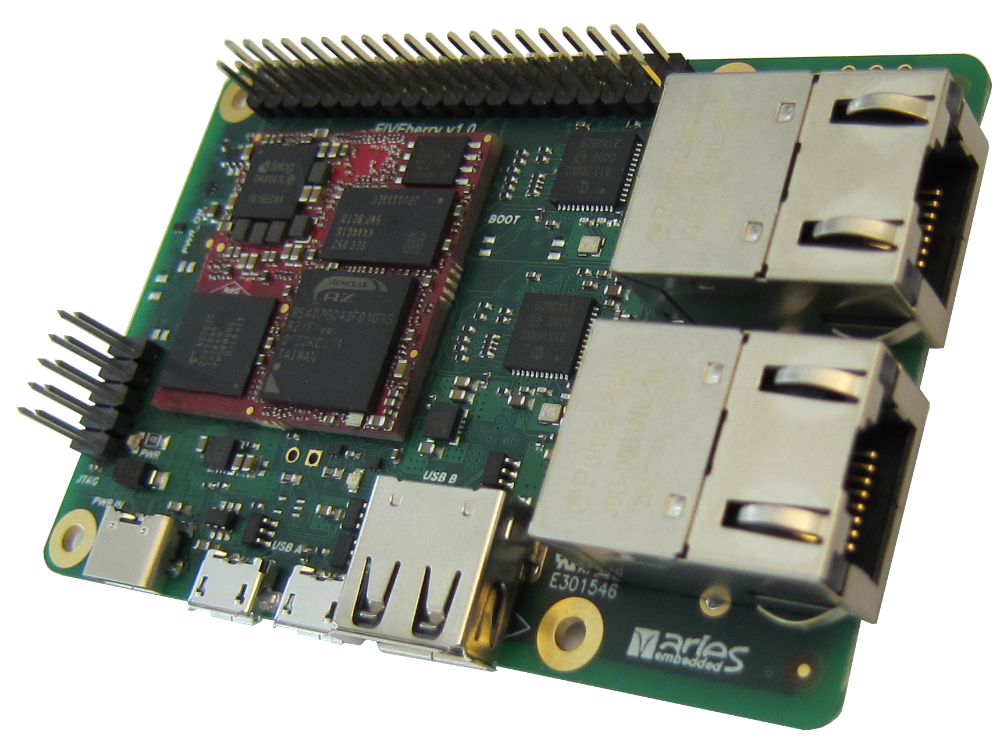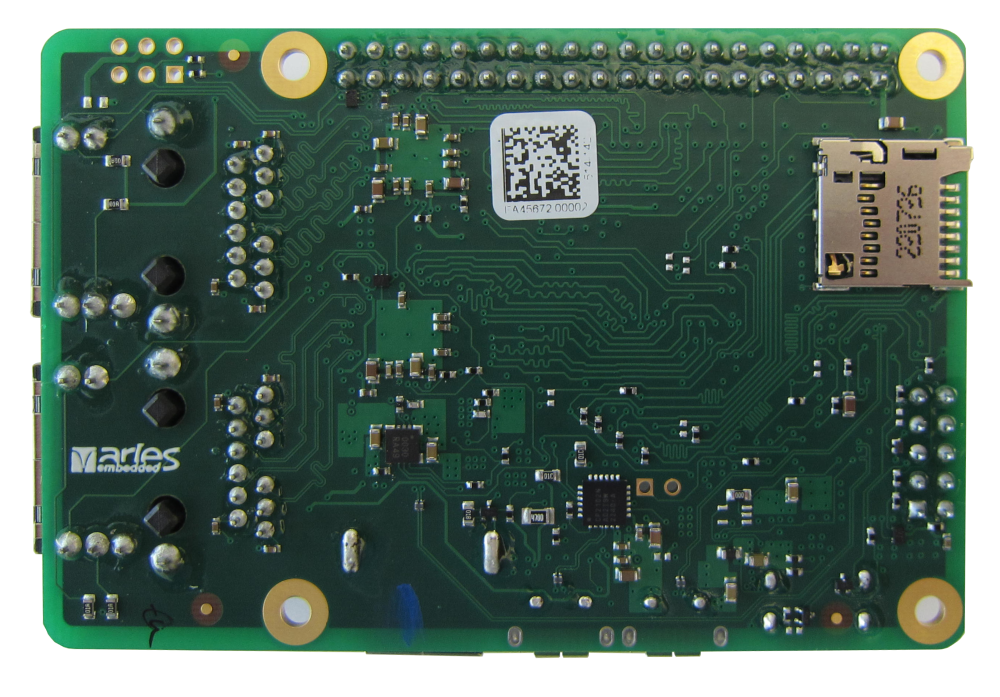FIVEberry
Application Board for the MSRZFive SoM

The FIVEberry baseboard is build around the MSRZFive System on Module. The FIVEberry supports users to have a smooth start-up with the new CPU architecture RZ/Five by Renesas. It supports all necessary features to make first steps with the RISC-V CPU core, develop and debug drivers and the bootloader and even to use it in prototype setups.
The MSRZFive is based on Renesas RZ Family architecture offering high-performance 64-bit RISC-V core. The MSRZFive combines compact design and a wide range of services, bringing low power consumption, thermal efficiency and low-cost to embedded systems.
The RZ/Five general-purpose microprocessor units (MPUs) are built around a 64-bit RISC-V CPU core and employ the Andes AX45MP, based on the RISC-V CPU instruction set architecture (ISA). Peripheral functions include support for multiple interfaces, such as two Gigabit Ethernet channels, two USB 2.0 channels, and two CAN channels, as well as dual A/D converter modules, making it ideal for applications such as entry-class social infrastructure gateway control and industrial gateway control.
Features
- MSRZFive-A0A System on Module
- Renesas RZ/Five R9A07G043F01GBG
- 512MB DDR4 RAM
- no eMMC NAND Flash
- 128MBit SPI-NOR
- -25°...+85°C
- two Ethernet ports 10/100/1000MBit/s on RJ45
- console via USB to UART
- USB2.0 Host
- USB2.0 OTG
- 2xI2C
- GPIO
- SD-card interface
- 5V single voltage supply via USB
Block Diagram

Pictures



Order Codes
FIVEberry-A0A
supporting
- MSRZFive-A0A System on Module
- Renesas RZ/Five R9A07G043F01GBG
- 512MB DDR4 RAM
- no eMMC NAND Flash
- 128MBit SPI-NOR
- -25°...+85°C
- two Ethernet ports 10/100/1000MBit/s on RJ45
- console via USB to UART
- USB2.0 Host
- USB2.0 OTG
- 2xI2C
- GPIO
- SD-card interface
- 5V single voltage supply via USB
The idea of all Open Standard Modules is to create a new, future proof and versatile standard for small-size, low-cost embedded computer modules, combining the following key characteristics:
- Completely machine processible during soldering, assembly and testing
- different possible packages for direct PCB soldering without connector
- Pre-defined soft- and hardware interfaces
- Open-Source in soft- and hardware
The Open Standard Module specification allows developing, producing and distributing embedded modules for the most popular MCU32, ARM and RSICV architectures. For a growing number of IoT applications this standard helps to combine the advantages of modular embedded computing with increasing requirements regarding costs, space and interfaces.